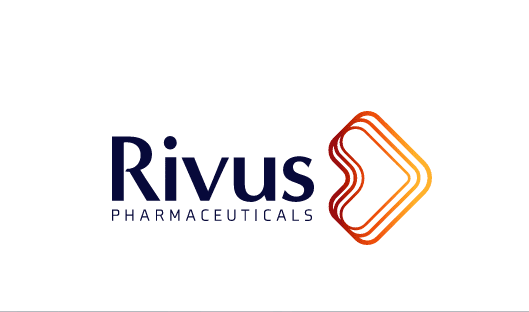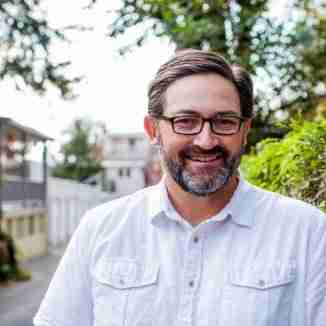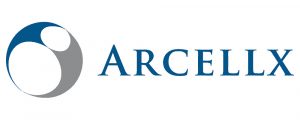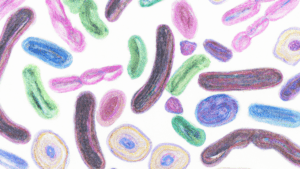
In Conversation: President and CEO Allen Cunningham and CSO Shaharyar Khan, Rivus Pharmaceuticals
There’s a tremendous amount of life sciences momentum and excitement emanating from the rapidly emerging Charlottesville biocluster.
We’ve written extensively about the great ecosystem and community building work of CVilleBioHub; and the BioBuzz team has documented any number of innovative companies that call the Charlottesville area home.
We are thrilled to feature yet another CVille company that’s doing amazing things in the region—Rivus Pharmaceuticals (Rivus). The clinical-stage company, dedicated to improving cardio-metabolic health, recently announced a $132M round of Series B financing that will support the advancement of its lead pipeline candidate, HU6.
This is a truly exciting time for Rivus and we thought it was a great moment to catch up with not just one, but two of its leaders, President and CEO Allen Cunningham and CSO Shaharyar Khan, to discuss the company’s history, its promising, first-in-class drug candidate HU6, and what’s next for Rivus.
How did Rivus get started and what sparked its creation?
Cunningham:
We started the company three years ago in March 2019, which was concurrent with a Series A investment. Shaharyar and I had founded an organization prior to Rivus that was a mitochondrial therapeutics company that had a number of early-stage programs. One of these sets of assets were based on mitochondrial uncouplers and we saw a compelling opportunity to leverage these assets and take them into the clinic.
It was very early at the time, but we were able to secure funding from Longitude Capital and Medicxi, who really believed in the science and the approach.
Talk to me about the science behind Controlled Metabolic Accelerators (CMAs) and mitochondrial uncoupling.
Khan:
Mitochondria are not just the energy factories of the cell, they are involved in a number of critical processes and one particular aspect of their biology we were intrigued by was their ability to oxidize or burn fat. Mitochondria are responsible for taking the nutrients that we consume—the fats, sugars, proteins, etc.—and oxidizing or burning the carbons present in the food we consume.
All that is to say our bodies take the power of these carbons, we burn them, and to use an analogy, we build up all this water on one side of a dam. And there’s a protein, Complex 5, that sits at the interface of the dam and all that water, and literally acts like a turbine. The proton motive force uses all that power from the water on one side to generate ATP or adenosine triphosphate. (ATP is the principal molecule for storing and transferring energy in cells.)
Anywhere from 20-30% of the calories we consume do not go toward making ATP. They leak through the dam, which is known as proton leak or mitochondrial uncoupling. Mitochondrial uncoupling enables us to support our basal metabolic rate and is important for reducing free radical species and is a way for you to maintain your mitochondria, essentially in an idle state.
What we wanted to do is take this insight—that you could burn all these fats and sugars in this process of proton leak/mitochondrial uncoupling—and increase the caloric burn in a controlled fashion.
Our Controlled Metabolic Accelerators (CMAs) are accelerating metabolism by producing the ‘water leak’ that can cause the consumption of all those calories.
This process happens naturally. For example, when you get into a swimming pool you increase your basal metabolic rate and your caloric expenditure to stay warm. Michael Phelps would consume 8,000-12,000 calories a day and people wondered how he could burn those calories. If you run a marathon, you burn 3,000 calories. In a pool you have excellent heat transfer so his body had to uncouple more and that’s why he had burned, and then had to consume, so many calories to maintain his weight and ability to train.
The Phelps example really speaks to the profound metabolic flexibility of the body. Our therapy utilizes these physiological changes to affect fat oxidation that would result in fat-specific weight loss.
Cunningham:
The therapeutic potential here is to treat obesity, which is a significant factor for cardio-metabolic diseases. So one way of thinking about how this mechanism of mitochondrial uncoupling is different is how it is addressing the common problem of excess energy in cardio-metabolic diseases, which is an imbalance of energy input and energy expenditure.
Our CMAs target energy expenditure. Most of the other approaches currently available on the market reduce the energy input, like caloric restriction and appetite suppression. The problem with that approach is that approximately 30% of the weight loss is skeletal muscle mass.
Our CMAs oxidize fat while preserving muscle mass. That’s what makes our approach different from other therapies currently on the market. What’s also exciting is that our therapy is harnessing a natural process, as our bodies are undergoing mitochondrial uncoupling every day.
Your lead candidate HU6 generated positive Phase IIa data early in 2022. What are the next steps in the regulatory process?
Cunningham:
Back when we started, we had a collection of CMA assets and one elite candidate, HU6. We completed a full IND-enabling program, submitted our IND and completed a Phase I study. We were able to see clear evidence of target engagement, dose dependent increases in metabolic rate and proof of concept for the mechanism.
Based on the Phase I study, we designed a Phase IIa metabolic study for high BMI subjects with greater than 8% liver fat, treated those patients for two months and saw excellent results. The results showed that HU6 stands alone in its mechanism for fat selective weight loss, meeting the primary study endpoint for reducing liver fat, as well as reducing body fat.
These results helped us secure new rounds of funding and setup the next phase of HU6 clinical development in cardio-metabolic disease, including a Phase 2a trial in obese patients with heart failure with preserved ejection fraction (HFpEF), which is currently enrolling, and a Phase 2b trial in obesity that will begin enrollment in 2023. We’re also engaged in ongoing discovery of additional CMAs.
Khan:
Another important finding out of our Phase II metabolic study was this: we told our patients if you’re exercising and dieting beforehand, keep it up; if you’re not, you don’t need to change a thing. Our pharmacology doesn’t need exercise and diet to achieve weight loss. Exercising and a good diet always helps, but for patients that are physically unable to exercise, our therapy can provide great benefit.
We also believe HU6 can lead to healthy weight loss that could preclude invasive and sometimes risky procedures like bariatric surgery, for example, or make it a less necessary option in the future.
What is the market size for HU6 and, if commercialized, what is its potential impact on patients and the healthcare system?
Cunningham:
While there have been several recent clinical successes in the medical treatment of obesity, it is still in the early stages. The field has made a big leap for where these treatments were even two years ago.
There are 150M people in the U.S. and 450M people outside the U.S. that are clinically obese but only 1-2% are treated pharmacologically so there’s a huge potential market.
There’s tremendous potential to improve significant risk factors of cardio-metabolic diseases, especially obesity, and drive healthcare costs down.
Khan:
The burden of obesity and cardio-metabolic diseases on quality of life and healthcare costs is significant. The opportunity to return quality of life to people, to reduce hospitalization and the associated mortality that derives from obesity is huge.
We believe HU6 will be part of the movement toward a healthier society, and we’re excited to be part of this new wave of potential obesity treatments.
How has the Charlottesville life sciences ecosystem supported Rivus and why is the Cville Biohub a great place to start and grow a biotech company?
Cunningham:
We’re located in a university town that’s very supportive of life sciences companies and early-stage biotech. There’s a lot of innovation coming out of UVA and there’s a good base of talent here to leverage that innovation and create companies. While it’s still a small community, it’s a strong one.
There are some challenges of not being in a big hub; it’s not necessarily the first place large institutional investors look to deploy capital. I think that’s changing and I like to think Rivus is playing a role in changing that.
It’s very exciting to see other local companies moving therapies into the clinic. The more companies that we see do that, the better, and it will only strengthen our local biotech community. Charlottesville is just a great place to build a company.
We work with a fantastic team of collaborators from all over so we’re outward facing in all respects, too.
Khan:
We have tremendous intellectual capital in this region with companies and technologies that will undoubtedly be game changers in the biotech and healthcare industry.
It should be mentioned that groups like CVilleBioHub and others are instrumental in helping early stage companies go from incubation to proof of concept and beyond.
We’re proud of our community and the progress that everyone is making and excited to be part of a very talented group of individuals and companies. We live in a great town and region.
- About the Author
- Latest Posts
Steve brings nearly twenty years of experience in marketing and content creation to the WorkForce Genetics team. He loves writing engaging content and working with partners, companies, and individuals to share their unique stories and showcase their work. Steve holds a BA in English from Providence College and an MA in American Literature from Montclair State University. He lives in Frederick, Maryland with his wife, two sons, and the family dog.







